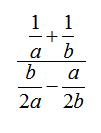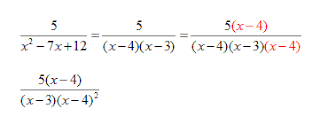Problem Solving Strategies 4.6
WORD PROBLEMS! YAY!
Often there are several ways to solve a real-life problem It
can be helpful to use more than one method and then compare results…
We turned to the textbook Page 193 and looked at the Example 1
problem…
A logging company is making a reforestation plan. The company
has 90 square miles of logged land and is logging 15 square miles more each
year. The company plants 30 square miles f new trees each year.
Predict how long it will take for the logged land to be
reforested.
Method 1
You can use a table and look for a pattern For the logged land
start with 90 square miles and add 15 square miles each year. For the reforested
land, start at 0 (because they hadn’t started this program, yet) and add 30
square miles each year.
See the chart:
Year
|
0 (NOW)
|
1
|
2
|
3
|
4
|
5
|
6
|
Logged land
( in
square miles)
|
90
|
105
|
120
|
135
|
150
|
165
|
180
|
Reforested
(in square
miles)
|
0
|
30
|
60
|
90
|
120
|
150
|
180
|
From the table you can see that will take 6 years to reforest
all the and that has been logged.
Method 2
Please turn to page 193 and look at the coordinate graph to visualize
the same data as in the table above. That graph shows that the amount of
reforested land steadily approaches the amount of logged land. It also shows
that it will take 6 years to reforest the logged land.
Method 3
Use an equation to solve this problem
Please look at Page 194 for the Verbal
Model
We know:
Land already logged = 90
Land logged per year = 15
Number of years= THAT”S WHAT WE DON”T KNOW!
Let n = the number of years
Land reforested per year = 30
90 + 15n = 30n
NOW we can solve the equation
subtract 15n from both sides
90 = 15n
90/15 = 15n/15
6 = n
So it will take 6 years to reforest all the logged land!
MOVIES
Suppose the cost of seeing a movie at a theater is $7. Buying
a DVD player costs $360 and renting a
movie to use on the DVD player is $4.
Write an expression to represent the cost of seeing y movies
at a theatre… and write an expression to represent the cost of renting the same
number of movies to use on your DVD player ( include the cost of the DVD player)
7y = the cost at the theater
360 + 4y = the cost at home
How many moves must you see so that the two costs are the same? Write an equation
that models that situation and solve for y- the number of movies watched.
7y = 360 + 4y
3y = 360
y =120
You would need to watch 120 movies to have the cost the SAME!
Suppose you watched more than 120 movies… which would cost
less at that point… going to the theatre or renting DVD movies?
Renting DVD movies. The cost is only $4 for a DVD and it is $7 at the theater.
Aesop’s Fables
In one of Aesop’s Fables, a tortoise and a hare are in a race.
The hare is far ahead and SURE to win, so it takes a nap. When the hare wakes up,
it sees that the tortoise is about to cross the finish line.
Suppose the hare runs 600 inches per second and the tortoise
runs 3 inches per second. When the hare wakes up, the tortoise is 1000 feet (12,000
inches) ahead. Which equation represents when the hare will catch up with the tortoise?
(Hint: If t represents time in seconds, then 3t is the distance in inches the tortoise
can travel in t seconds…)
A. 3t = 600t + 12,000 B. 600t = 3t + 12,000
C. 3t – 12000 = 600t D.
600t = 12,000
We had a class discussion on Wednesday about the correct
equation—which is B.
Using 600t = 3t + 12, 000, we solved for t
and discussed what our solution meant.
597t = 12,000
597t/597 = 12,000/597
t =20.1
20.1 seconds is the time when the hare will catch up with the
tortoise.
If the tortoise is 5 feet (60 inches) from the finish line
when the hare wakes up, who will win the race? Explain…






























